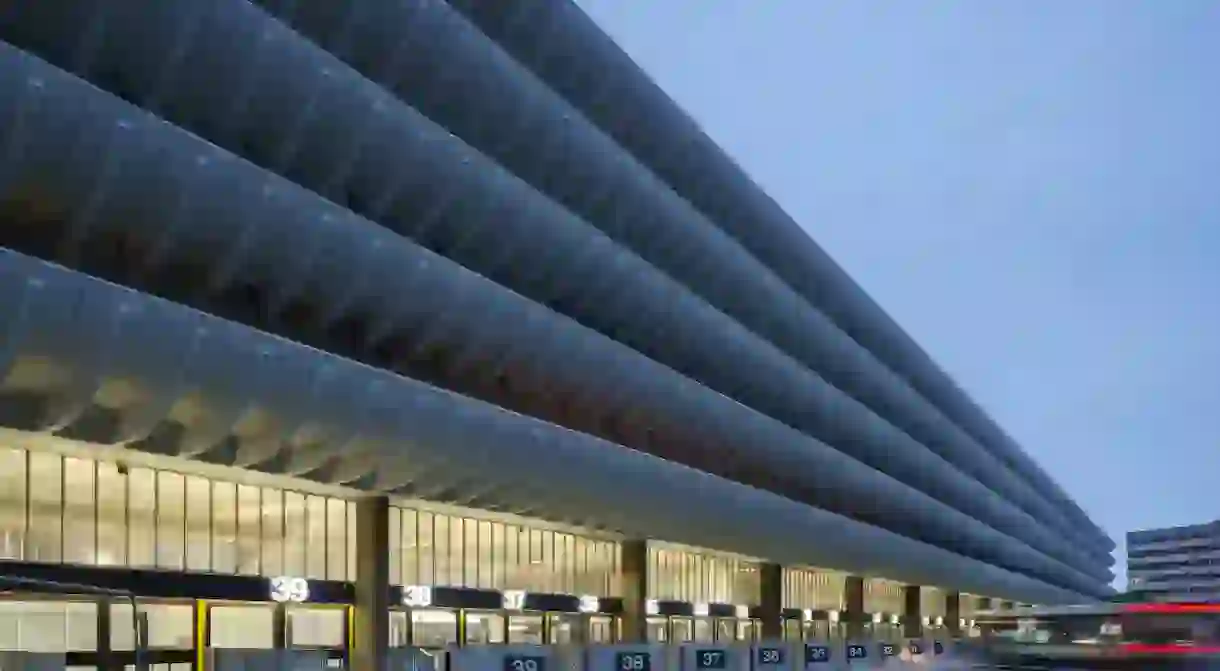Forgotten Gems: Preston Bus Station

‘Forgotten gems’ will look at rare buildings by well-known architects and underappreciated designs that deserve your attention. The first in this series is the ‘heroic’ Preston Bus Station in Lancashire.
With its dynamic scallop-shelled structure and focus on high quality materials, Preston Bus Station seemed to capture the optimism of the 1960s. It was a moment when a building as everyday as a bus station was deemed worthy of world-class engineering. Ove Arup engineered its elegant, elongated form before moving on to create the Sydney Opera House and the Pompidou Centre in Paris. When finished in 1969 it was hailed as an instant classic.

But times change. What was once regarded as one of the best examples of modernist architecture in the country was seen by Preston City Council as a money pit. It was earmarked for demolition to be replaced by a soulless-looking shopping centre. However, following a vehement campaigning and a renewed interest in British Brutalist architecture, people started to look at this fragile brute in a new light, deciding it was perhaps worth saving after all. Preston City Council eventually sold the building for the princely sum of £1 to Lancashire County Council in 2014, which took Preston Bus Station under its wing and poured £35.3 million into its refurbishment.

Fledgling architect John Puttick was offered the chance to redevelop the 20th-century gem after winning an anonymous competition set up by the council – a great gig for an architect who had only just set up his practice at the time.
‘It has been an incredible privilege to win such a important public commission so early in the life of our practice,’ says Puttick. ‘Preston Bus Station is an important example of Brutalist architecture. Its dramatic presence with elegantly curved concrete parapets is familiar, but the building is also generous in the public spaces it provides and thoughtfully designed in its material choices and detailing.’

As Puttick says, what makes Preston Bus Station so iconic is, undeniably, its long, curved profile, stretching out elegantly for 190 metres. This impressive structure, which stands as the second-largest bus station in Western Europe, looks monolithic, but it is in fact made up of 2,800 sections of precast concrete. It’s the smaller details that elevate this functional building from the mundane to the memorable – the black rubber Pirelli floor, the flashes of bright yellow or the use of tropical hardwood for the seating and handrails.

‘It was built during a period of history where we lavished a lot more time, money and attention on ordinary civic spaces in a way that we simply don’t anymore,’ says TV presenter and architecture historian Tom Dyckhoff, who supported the campaign to save the bus station. ‘Preston Bus Station is a really heroic piece of architecture – it’s amazingly strong in terms of how it’s built and how it’s designed, but what really struck me when I last visited it before the building was restored is that it’s also a living, breathing, vibrant public space where people come and go, waiting for their bus or buying a sarnie in the sandwich shop. It’s these types of everyday buildings that are under threat in our towns and cities now, and that’s why it’s so thrilling to see that it’s been saved and restored so beautifully.’

Puttick strived to sensitively restore this gentle giant back to its former glory, mainly working with what he had. He recycled the timber ‘bus pens’ by turning the wooden panels on their side to become benches, while the existing Iroko wood detailing and white ceramic tiles were all salvaged and reused wherever possible. New lighting has been thoughtfully installed to enhance the ribbed ceiling and the signage maintains a minimal look free from garish logos and advertising, letting the original British Rail typography shine.

Some of the less successful elements of the building have, however, been addressed. In particular the unsociable subways, which have been ditched in favour of open, pedestrian walkways. The biggest change of all to the site is the addition of the zinc-clad 2,600-square-metre ‘Youth Zone’ building. It comprises a rooftop football pitch and cultural and sports facilities, which is designed to complement its robust, much bigger brother once it’s complete in 2019.
But what’s really worth celebrating about this building is the generosity of the space and the quality of the materials. Ask an architect to build a new bus station in its place and this extravagance simply wouldn’t be replicated now. At the time, Ingham’s aim was to give ordinary people a taste of something akin to luxury air travel, which few people could afford. Now the enjoyment comes from spending time in a building that still captures the spirit of the era.














